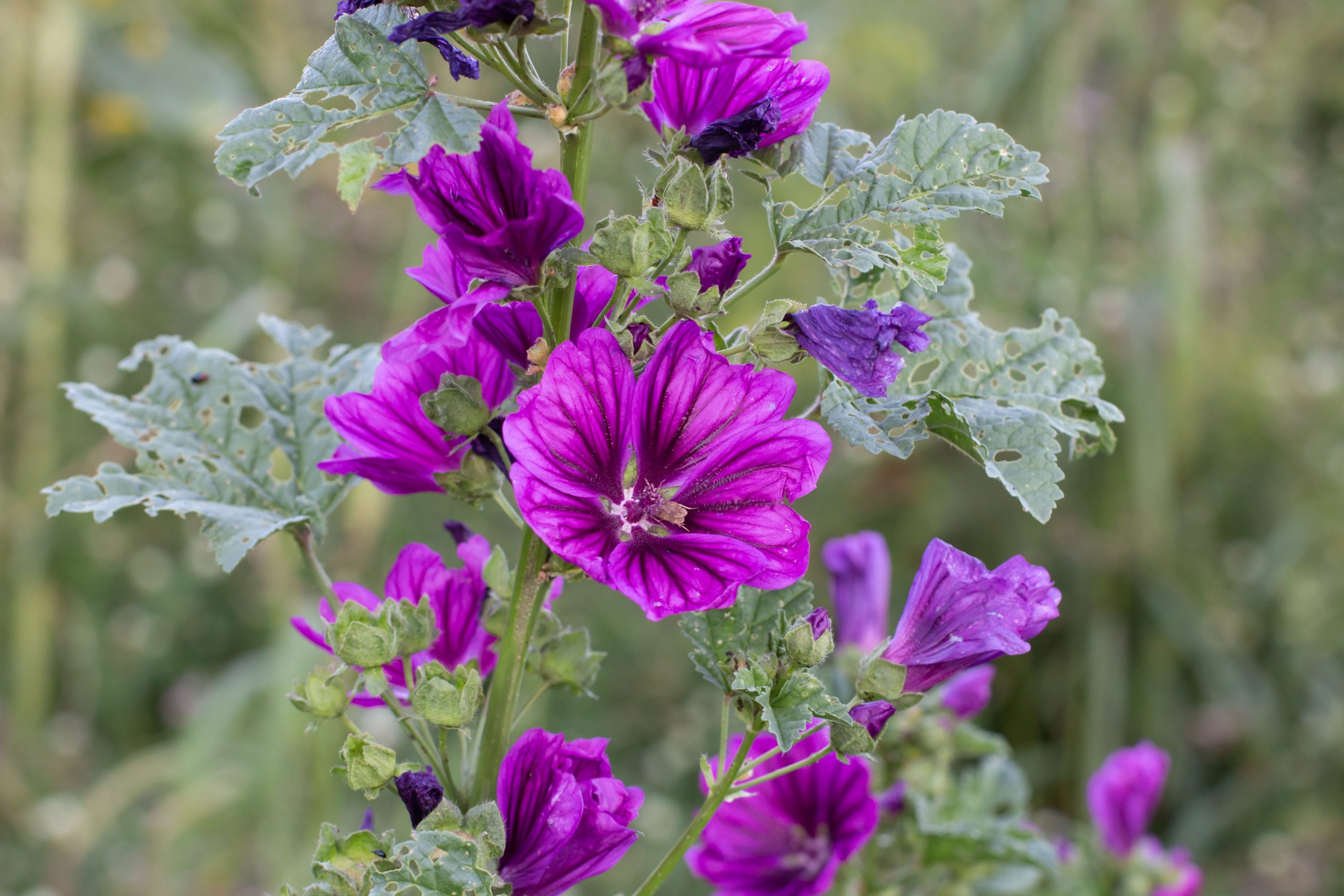Wild mallow
Wild mallow (Malva sylvestris) grows long-stalked, usually five-lobed leaves on a pubescent stem.
Tufts of 2 to 6 long-stalked, pinkish-purple petals, interspersed with darker leaf veins, sit in the leaf axils.
The wild mallow reaches a height of 50 to 120 cm.
Family and collection time
Wild mallow belongs to the mallow family.
The wild mallow can be confused with the path mallow. This one blooms pale pink and is much smaller. However, it can be used in the same way.
Parts of the plant used: Flowers, leaves, young shoots
Collection time in detail:
- Flowers: May – September
- Leaves: May – September
- Shoots: May – September
Healing effect and application
Therapeutic effect:
The mucilages of the mallow lay like a protective film on the irritated mucous membranes.
Naturopathic use:
Anti-irritant for cough, hoarseness, sore throat and stomach ailments. From the leaves and flowers can be made a tea.
Ingredients: (selection)
- Mucilage
Recipe for the kitchen:
Leaves, flowers and shoots go well with salads and vegetables
References:
Beiser, Rudi: Our edible wild plants. Kosmos Nature Guide 2018
Bühring, Ursel: Praxis-Lehrbuch der modernen Heilpflanzenkunde; Grundlagen – Anwendung – Therapie. Sonntag Publishing House Stuttgart 2005
Pahlow, M. Pharmacist: Medicinal Plants. Bechtermünz Publishing House Augsburg 2001
Schneider, Christine: Finding wild herbs. Ulmer Publishing House Stuttgart 2017
Recipe by Dr. Markus Strauß www.dr-strauss.net

